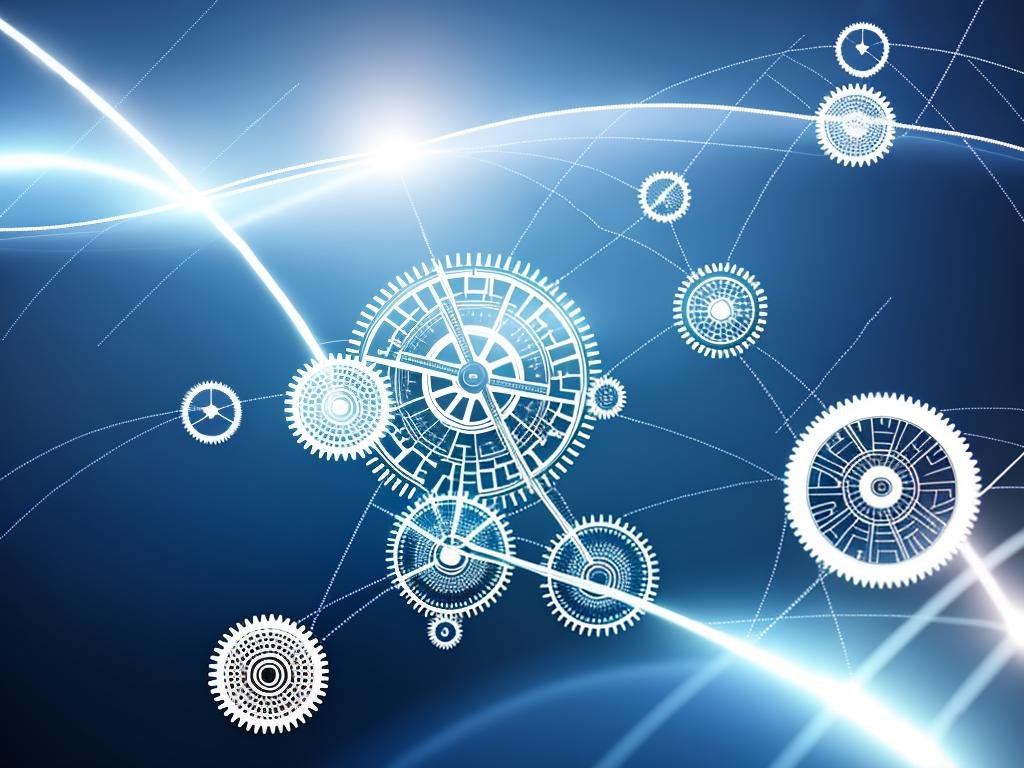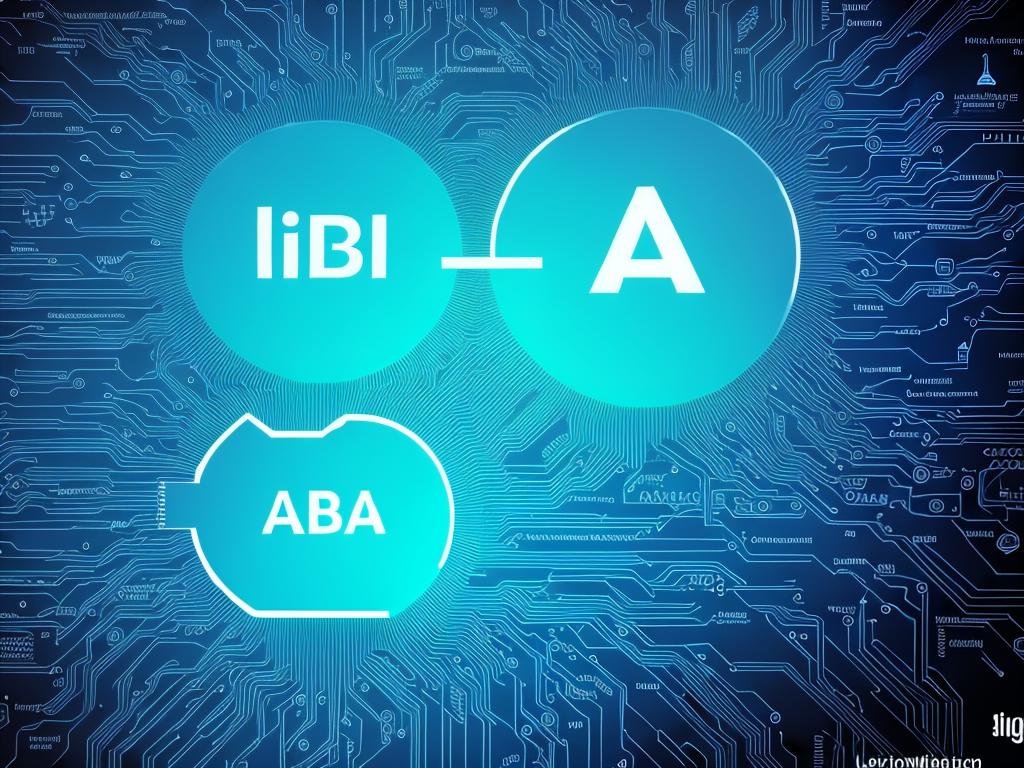The exponential rise of transformative technologies such as Artificial Intelligence (AI) and Big Data herald a shift in the paradigm of how we view our world. These technologies, once the stuff of science fiction, are now paramount in shaping our current societal structure. From health to education, business sectors and more, the significance of AI and Big Data transcends boundaries, revolutionizing and streamlining processes in ways unimaginable a few years ago. Our comprehension of these vast and complex concepts, as well as their implications and potential issues, offers us an essential toolset to navigate the rapidly changing landscape of our technologically-driven world.
Understanding AI and Big Data
Understanding AI and Big Data: Core Concepts
Artificial Intelligence (AI) and Big Data have become buzzwords in the era of technology and data. Yet, they can be intricate fields which require simple yet precise dissection to understand their significance and application.
AI and Big Data: Individual Workings
While AI aims to imitate human intelligence, it works on complex algorithms, machine learning, deep learning, and neural networks. Machine learning, a subset of AI, is a practice where a system efficiently learns from existing data, thereby allowing it to predict and make decisions. Deep learning, a subdivision of machine learning, mimics the human brain’s neural networks to process data and create patterns essential for decision making. An exciting part of artificially intelligent systems is that just like human beings, these machines also learn from their mistakes and enhance their performance with each task.
On the flip side, Big Data involves gathering vast quantities of structured and unstructured data from various sources like social media, business transactions, online data, satellite data, etc. These data sets are too large for traditional data processing techniques to handle. Therefore, Big Data uses advanced computational techniques to analyze, extract information from, or deal with data sets sorting for patterns, trends, and associations.
The Intersection of AI and Big Data
Groundbreaking innovations stem from the intersection of AI and Big Data. While AI offers the brain, Big Data provides the raw material, or data fuel for AI systems. The amalgamation offers a broader spectrum; for instance, Big Data’s analytical insights are brought to life by AI capabilities for better data interpretation and strategic decision-making processes.
An ideal example of the interplay between AI and Big Data is Netflix’s recommendation system. It uses AI to analyze Big Data collected from individual subscribers’ viewing history and preferences to suggest movies or series likely to be their preference. This interplay results in a more personalized user experience and efficient service delivery.
Summary
Conclusively, Artificial Intelligence (AI) and Big Data individually hold immense potential, yet when combined they spark extraordinary advancements, stretching the limits of technological capabilities. While the concepts may seem complex, the understanding one must have is that AI and Big Data function seamlessly together – realizing their combined potential is vital for the shaping of tomorrow.

Importance and Roles of AI and Big Data
Future Game-changers: AI and Big Data
AI and Big Data are more than trendy buzzwords – they are potent tools that are revolutionizing various sectors such as healthcare, education, and business. Their introduction has ushered in countless new opportunities, expanding the horizons of what we can achieve. They are not only indispensable catalysts for technological progress, but are subtly becoming commonplace elements of our everyday existence.
The Role of AI in Modern Society
AI, at its core, is a blend of programming and machine learning, enabling computers to mimic human intelligence. It plays a critical role in various sectors. In healthcare, AI is used in predictive analysis, medical imaging, drug discovery, and robotic surgeries, enhancing precision, and reducing human error.
In the education sector, AI is transforming the learning experience by personalizing curriculum, enabling interactive learning, and automating administrative tasks. It allows educators to cater to each student’s unique learning style, thus making education more effective.
AI has a large footprint in the business sector as well. It aids in data analysis, decision making, customer service, sales, and marketing. By automating tasks and providing insights into patterns and trends, AI empowers businesses to make data-driven decisions, improve customer experience, and drive revenue growth.
Big Data Driving Decision Making
Big Data is a term that refers to the vast amounts of structured and unstructured data that is produced every second. The importance of big data lies not in the quantity, but how organizations analyze, interpret, and leverage it to make strategic decisions.
The healthcare industry uses big data to predict disease outbreaks, devise preventive strategies, and improve patient’s quality of care. In business, big data analytics is used to understand consumer behavior, market trends, and to make strategic business forecasts. In the education sector, big data aids in identifying gaps in the educational system, understanding student behavior, and predicting future trends in education to improve teaching methodologies.
The Combined Power of AI and Big Data
The combination of AI and Big Data provides unprecedented capabilities. AI depends on a massive amount of data to learn and make intelligent decisions. Conversely, Big Data requires advanced technology like AI to manage and extract meaningful insights from it. When combined, they create powerful synergies.
In healthcare, AI-powered tools can analyze massive datasets to predict and diagnose diseases early. Similarly, in business, AI algorithms can delve into big data to reveal hidden patterns, extract critical insights, and predict future trends, allowing businesses to stay ahead in the competitive market.
A Brief Introduction
Two of the most transformative forces in today’s digital era are Artificial Intelligence (AI) and Big Data, with their combined power being the impetus for innovative breakthroughs in many sectors. As interconnected entities, their advancement will have massive implications for our future. Beyond technology growth, AI and Big Data can also propel job creation, socio-economic progress, and improvements in living standards.

Synergy of AI and Big Data
Exploring the AI-Big Data Synergy
While Artificial Intelligence (AI) and Big Data are unique technologies in their own right, their combination can yield impressive results, overhauling various industries and aspects of daily life.
AI can be summed up as the development of systems or machines that mimic human intelligence, displaying attributes like learning, reasoning, problem-solving, perception, and understanding of language. Big Data, on the other side of the coin, is concerned with managing vast, intricate datasets that exceed the processing abilities of traditional software. These datasets can consist of a wide array of structured, semi-structured, or unstructured data from numerous sources, such as social media content, emails, financial dealings, and healthcare records.
How AI Uses Big Data
A curious mind might immediately question how AI interacts or intertwines with big data? The answer lies in deep learning and machine learning, the sub-disciplines of AI that set the stage for an intricate dance between AI and big data. Machine learning involves programming computers to learn from data, to improve their performance, and make accurate predictions. However, for this learning to occur, the computer needs access to copious amounts of data, herein referred to as big data.
The use of big data is taken a notch higher by deep learning, a deeper layer of machine learning that tries to simulate the workings of the human brain in processing data for decision making. Deep learning algorithms use artificial neural networks with different abstraction layers, digging deeper into the data to understand patterns and relationships therein.
Leveraging the Power of AI and Big Data: From Netflix to Industry 4.0
With AI and big data merger, it’s as if technology has ushered us into a world of ingenious practical applications, reshaping both personal lives and business landscapes. A ready illustration is the way Netflix and Spotify – two behemoths in the entertainment streamlining space – have utilized AI and big data to tailor their offerings. By tapping into AI-driven big data analytics, they’ve managed to pin down user preferences and behaviors, leading to highly personalized entertainment recommendations.
Healthcare is another area where AI and big data have been game-changers, specifically in predictive analytics, and enhanced diagnostics and treatment methods. Healthcare professionals now have AI-powered tools at their disposal, tools trained on vast medical databases, capable of predicting disease spread, making real-time diagnoses, and crafting individualized treatment plans.
The impact of AI and big data transcends healthcare, though. Businesses, for instance, are a testament to how customer relationship management has been reshaped by these advancements. With AI’s deep learning algorithms, businesses can create personalized customer engagement strategies, comprehensively analyze the outcomes of their marketing campaigns, and even forecast trends based on consumer purchasing behaviors.
Reflecting on the Fourth Industrial Revolution or Industry 4.0, it becomes evident that this era is propelled by AI and big data. Businesses undertaking digital transformation heavily rely on these technologies to glean insights into their operations, their competitors’ strategies, the market’s dynamism, and future projections.
In the grand scheme of things, no sector has been exempt from the potent combination of AI and big data. Through machine learning, businesses can decode valuable insights from an ocean of big data – a transformation that echoes in how we interact with technology today.

Challenges and Concerns Related to AI and Big Data
Mounting Challenges in the Realm of AI and Big Data
The lightning-fast evolution of technology has catalyzed the rise of AI (Artificial Intelligence) and big data. From global corporations and educational institutions to governments, their applicability seems far-reaching. However, the mounting wave of these technologies brings to light an array of challenges and concerns. These emerging issues need timely responses to ensure that while we notch up the rewards, we also keep their potential risks in check.
Data Privacy Concerns
One of the most significant concerns regarding AI and big data is data privacy. In the age of digital networks, large amounts of personal data are collected regularly. When combined with big data analysis and AI algorithms, the extent and depth to which this data can reveal personal detail are unprecedented.
For instance, tech companies may collect data about user activity and preferences, analyze this data on a massive scale, and use AI algorithms to predict behavior or even influence decisions. While data anonymization efforts are made, the sheer amount of data processed and the detailed analyses that it undergoes can often lead to the identification of individuals, raising significant privacy concerns.
Misuse of AI
Another challenge is the potential misuse of AI. AI can be described as a double-edged sword; while it offers numerous benefits, it can also be misused. For example, concerns have been raised about AI systems being used to spread fake news, manipulate images and video (deepfakes), or even be utilized in autonomous weapons systems. Moreover, the risk of AI systems being hacked and controlled for malicious intent is a significant concern.
These issues highlight the need for oversight and regulations to mitigate the risks associated with the misuse of AI. It’s crucial that the development and use of AI systems are underpinned by robust ethical guidelines and policies that promote their beneficial use.
Security Issues
With AI and big data comes potential security challenges. Large quantities of data are stored in various repositories, increasing the risk of data breaches. In addition, sophisticated AI algorithms can potentially be used to identify vulnerabilities in security systems and exploit them, leading to a higher risk of cyber-attacks.
Security issues are particularly relevant to industries such as finance, healthcare, and government, where sensitive data is held. Therefore, continuous efforts are required to enhance security systems and practices to protect against potential threats.
Understanding the Digital Divide in the Age of AI and Big Data
The advent of AI and big data technologies has brought forward a significant concern – the widening of the digital divide. This divide illustrates the disparity between those who can access and utilize digital technologies and those who cannot. As these technologies become more ingrained in our lives, the worry is that they could further deepen this divide.
This potential inequality could leave those without access at a clear disadvantage, missing out on the numerous opportunities these technologies offer and effectively limiting their active participation in an increasingly digital world. This raises the question of the need for policymaking and initiatives aimed at promoting digital inclusivity. The goal is to ensure the bridging of the digital divide so the benefits offered by AI and big data can reach everyone.

The Future Trajectory of AI and Big Data
AI and Big Data: An Interconnected Relationship
The epitome of the contemporary technological sphere stems from two predominant advancements – AI (Artificial Intelligence) and Big Data. Combined, these two groundbreaking technologies set the stage for revolutionary changes across various sectors.
Artificial Intelligence seeks to emulate human intelligence in machines, enabling them to learn, think, and accomplish tasks that once required human input. Meanwhile, Big Data refers to the colossal amount of structured and unstructured data accumulated from various sources, which hold the potential for invaluable insights.
The relationship between AI and Big Data is one of mutual dependency. AI systems rely heavily on the massive amounts of data offered by Big Data to make critical decisions. In contrast, Big Data gains from AI’s prowess in data analysis. AI algorithms can sift through vast data pools quickly and precisely, procuring valuable insights at a far quicker rate than traditional data processing methods.
The Future Trajectory of AI and Big Data
In the future, AI is expected to improve in leaps and bounds, resulting in more profound interaction between humans and machines. With the drastic improvements in processing power, algorithms, and data storage capacities, the AI landscape will likely experience breakthroughs in various fields.
One particularly exciting avenue is the development of AI-prediction models. As AI and machine learning technologies become more refined, they will forecast long-term trends and impacts with increased precision. This can lead to improvements in sectors like healthcare, where AI could predict disease outbreaks, or in e-commerce, where predictive analysis could lead to more personalized shopping experiences.
Meanwhile, the future of Big Data lies in its increased accessibility and usability. As more businesses realize the massive potential of data-driven strategies, there will be a push towards more democratized data access. Through cloud-based data platforms and user-friendly analytical tools, businesses and individuals alike could analyze and utilize Big Data efficiently to drive their strategies and decisions.
Impact on Life and Work
The tandem of AI and Big Data is set to redefine many aspects of everyday life and work. From trivial tasks like searching for a restaurant to more complex ones like predicting stock market trends, AI and Big Data are poised to make such tasks more accurate and efficient.
In the workplace, AI and Big Data could automate routine tasks, freeing up human time for more creative and strategic activities. Furthermore, these technologies could lead to a more personalized work experience, with AI tools suggesting tasks based on an employee’s strengths, weaknesses, and preferences.
Regarding daily life, personal devices will communicate directly with the user, predicting their needs and catering to them. AI-powered home appliances could adjust themselves depending on the user’s habits to conserve energy. In healthcare, wearables could monitor vitals and alert healthcare professionals to potential health risks, consequently improving preventive care.
Consequently, the dramatic effects of AI and Big Data will only increase with time, influencing and reshaping industries, economies, and societies. It is absolutely crucial to arm ourselves with knowledge about these technologies, as the future they’re carving out is fast-approaching.

As we continue to tread on the trajectory marked by rapid advancements in AI and Big Data, it demands our keen attention and thoughtful deliberation. The potential of a future powered by these technologies paints a ground-breaking picture – replete with remarkable innovation, efficiency, and opportunities.
However, a call for responsible and ethical usage is prevalent, as such unparalleled progress also brings forth significant challenges. The repercussions on data privacy, security, and the digital divide are vital considerations we must address. Thus, as we stand on the brink of this technological renaissance, it is upon us to cultivate a well-rounded understanding, mindful application, and careful stewardship of AI and Big Data. Our empowerment and maturity in this regard will ultimately shape the course of our shared digital future.


